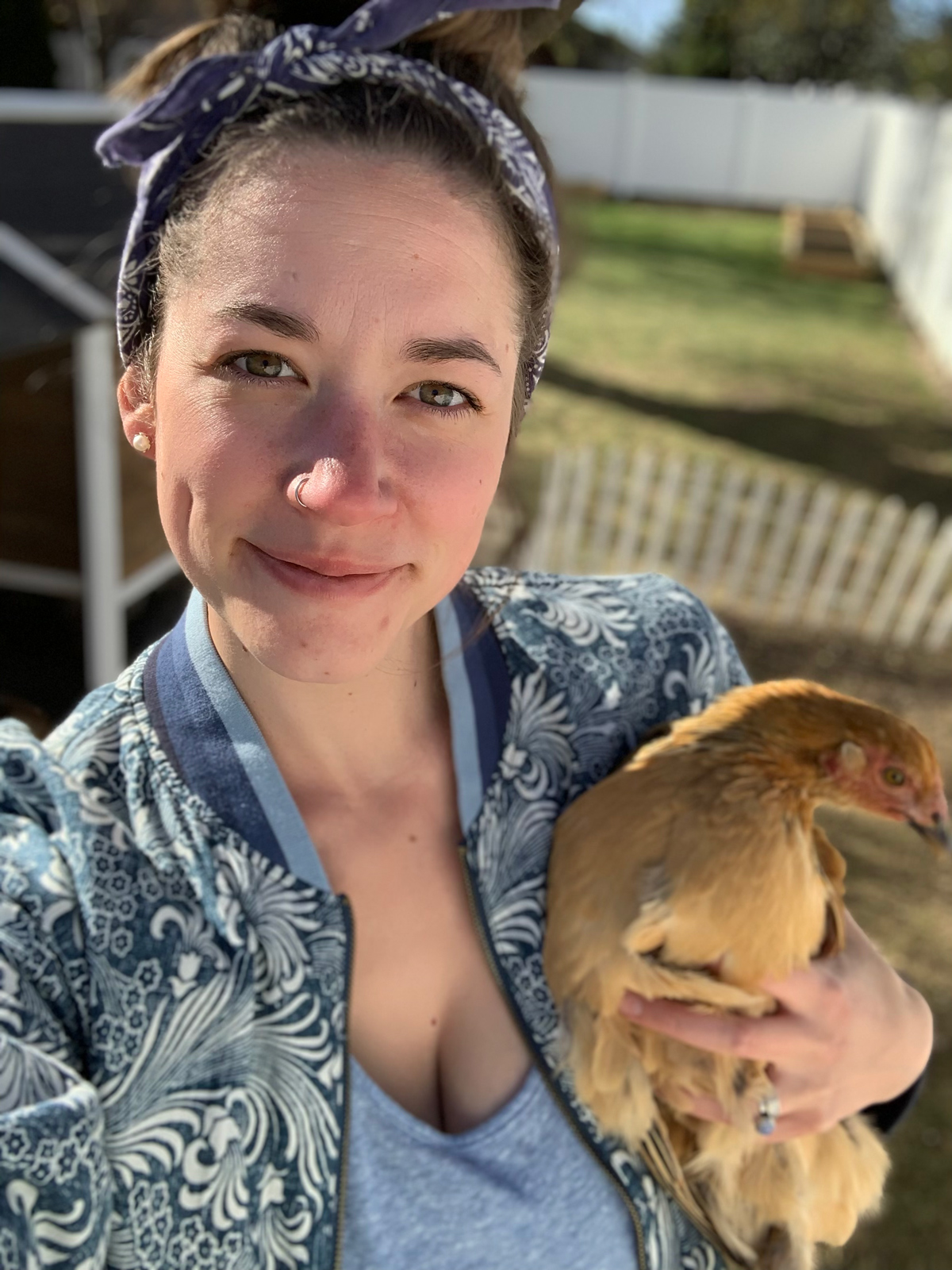Over the summer, my husband I took a huge leap. We sold our house and moved our family to a new property. Though we are still very much in backyard suburbia, our new house sits on an acre, complete with several outbuildings and a garden. We had been dreaming of moving to a larger property for awhile, and as soon as this one popped up for sale, we were captivated by the fully-fenced yard. I envisioned our chickens roaming around the pasture, gifting us with vibrant, delicious eggs after foraging in the forest. But first…I had to get them to the new house. Luckily, our move was a very short one, which helped us with logistics and time management. Here are my best tips for moving with chickens to make your day go a little smoother when the time comes!
1. Get the Right Equipment
The most useful pieces of equipment that I had on hand while moving with chickens were a couple of tarps and some crates. I used the tarps to keep my car clean and then stashed them away for later use, like winterizing my coop. Though I am sure you could go about it differently, I felt the easiest (and least stressful) way to transport my chickens was in crates. You could use dog crates, wire cages, or specific poultry transport coops to contain your flock.
2. Prep the Night Before
Moving with chickens was a bit more logistically challenging than I had anticipated. I couldn’t pack their things away like I was able to with our own belongings. So, the night before I moved them, I packed all of their stuff up and loaded it into my car. I tore down their run, gathered all of their feeders and waterers, and packed up their supplements and feed. I also made sure to lay down a tarp in the back of my car and set up their moving crates before I went to bed. Having all of these little steps completed the night before moving my girls made the morning much easier!
3. Don’t Let Them Out!
Though I definitely have a few “puppy-chickens” that run up to me as soon as they see me coming, I also have a few wily hens that are slippery. I knew I didn’t want to waste my time chasing escape artists around the run, so I made sure to keep them locked in their coop overnight, and didn’t let them out in the morning as usual. On the morning of our move, I took them straight from the coop and put them into their crates in the back of my car. The whole process of rounding up my chickens and securing them took less than 10 minutes this way.
4. Pay Attention to the Weather
We moved in the middle of summer, when it gets pretty hot over here in Eastern Washington. Because of this, I made sure to take advantage of the cooler morning temperatures and moved our flock first thing on The Big Day. This meant that they didn’t have to travel in my car during the high heat. Once we got to the new house, they got to enjoy a few hours of pleasant weather in their fully-stocked run before the temperature began to rise.
5. Have the New Spot Ready
We were fortunate enough to have a designated chicken run already in place at our new property. So, when I moved my hens, they went straight into the new run with fresh food and water. Their coop was delivered shortly thereafter, and they had everything they needed to settle in that same day. However, if you are moving somewhere that doesn’t have a spot in place for your chickens, setting up a temporary living space for them ahead of time is really important. Your flock will need a safe place to decompress after the stress of moving, and they need access to fresh food and clean water right away. Be sure to have some movable poultry fencing and a mobile coop ready and waiting for your girls at your new house if needed.


Cassidy Cornell is a mama, homemaker, and backyard poultry enthusiast living in Eastern Washington. She loves gardening, baking, and taking pictures of eggs.
All photos in this article are courtesy of Cassidy Cornell.

Notes from an Expert
On Moving With Chickens from Tom Watkins:
“Moving is a big stress for people and chickens. When I’m moving birds, I like to leave them cooped up for a few days afterward. Especially if they are in a new coop. This gets them used to their new home, and you will have fewer problems getting them back in to roost at night.”

